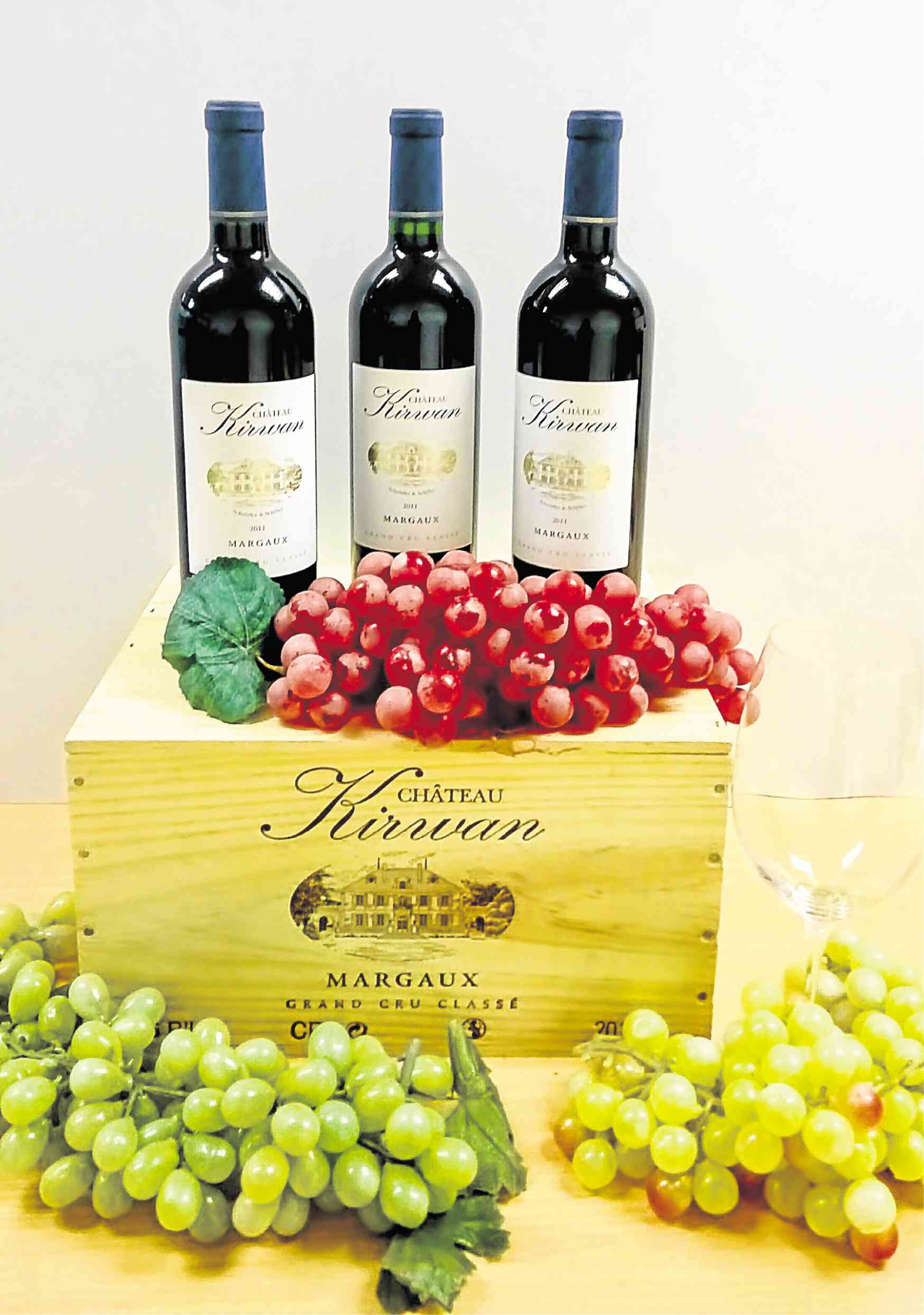
I attribute much of my wine knowledge to oenophile Sherwin Lao of Golden Wines. His passion for it is infectious—you have to pause to listen and learn.
Wine, the oldest alcoholic beverage in the world, must be appreciated for its many intrinsic qualities: color, scent, the complex taste and lingering aftertaste.
Watching an aficionado with a glass is a ritual by itself—the holding of the glass up in the air while the wine lover stares, swirls and smells it. Then the sipping and drinking, or sometimes, the swishing and the irritable sound of gargling.
These, Sherwin says, are the steps to fully appreciate wine, which he has summarized as the 2S3T approach: Sight and Smell (2S), Taste, Touch and Totality (3T).
Physical look
The first “S” stands for sight—the physical look of the wine when poured into the glass. Lao recommends pouring wine into a stem glass no more than two-thirds full. Hold the glass up by the stem, against the light or a white background to determine the color, hue, shade, clarity and even age of the wine.
White wines range from pale yellow, straw and darker yellowish green, to bright gold. For whites, the darker the color —turning to more amber or brown—the older the wine.
Or this may also show signs of oxidation. This oxidation is either natural if wine is five years or older, or when the cork leaks.
For reds, the color ranges from bright ruby, violet and garnet to very dark, almost black. The older the red wine, the more the luster fades and becomes dull. An old red wine can turn dark brown and very close to brandy-like in color.
The second “S” is smell, or what wine practitioners call the “nose” of the wine. To capture this, Lao says, “swirl your wine glass and put the glass just a few millimeters under your nose. Whiff, sniff and smell the wine several times.”
The swirling aerates the wine and allows the aromas to emerge. Good wine will have many different aromas, evolving with new scents and differing in intensity and levels with every swirl.
The more common terms used are aroma and bouquet. Aroma refers to the inherent qualities of the wine varietal or the grape fruit itself.
For instance, Chardonnay can have lime, lemon and peach flavors or scents. Cabernet Sauvignon may have black currant, blackberry, eucalyptus flavors.
Gamay, meanwhile, can be very floral, Shiraz akin to burnt fruit, and Merlot more earthy and cherry-like in flavor.
“These characteristics are, in other words, inherent to the grape varietal itself,” Lao says.
Winemaker influence
Bouquet, on the other hand, has more to do with “winemaker influence” or external factors.
What is described as “oaky” pertains to wine that has been aged in oak barrels. If described as “buttery” or creamy, the wine must have gone through malolactic or secondary fermentation, where the harsh malic acid found in grapes are transformed to the friendlier lactic acid.
Other bouquet descriptors include chocolate, toffee, cinnamon.
Lao adds: “Bouquet also refers to the developed aromas over a period of time or when wine is aged longer.”
The first “T” is taste. Take in or sip a small amount of wine. Look for sweetness, sourness and bitterness.
Sweetness comes from residual grape sugar, sourness from natural grape acid, and bitterness from the grape skins, stems and seeds. In wine jargon, we refer to un-sweet as dry. Dry means “absence of sugar.” Two percent residual sugar is already considered semisweet to sweet, Lao says.
For sourness, we say “acidic,” while for bitterness, we normally say “tannic.” Acidic wine mostly refers to white wine, while tannic is descriptive of red wine.
Mouth feel
The second “T” is for touch, which refers to the mouth feel and the finish of the wine.
Take more than just a sip. or a generous amount of wine, in your mouth. Then let your tongue touch the wine by moving it side to side in your mouth. This is to get the mouth feel.
From the mouth feel, you should be able to detect the wine’s body, whether it’s light-bodied, medium-bodied or full-bodied.
Full-bodied wine has the texture of creamy milk, thick and viscous. Light-bodied wine is closer to water. Anything in between are variations of medium.
After the mouth feel, the length of the finish is determined. Once swallowed, is the wine a fast finisher, a lingerer for a few seconds, or a long
“always at the edge of your mouth” type?
The final “T” is totality—judging the wine for balance, coherence, consistency and overall goodness.
“What is desirable in wine is that it looks, smells, tastes and finishes well—all integrated and balanced,” Lao says.
The Château Kirwan Grand Cru 3rd Growth Wine Dinner, featuring owner Yann Schyler, will be held soon.
Call 6385025; e-mail [email protected].









































